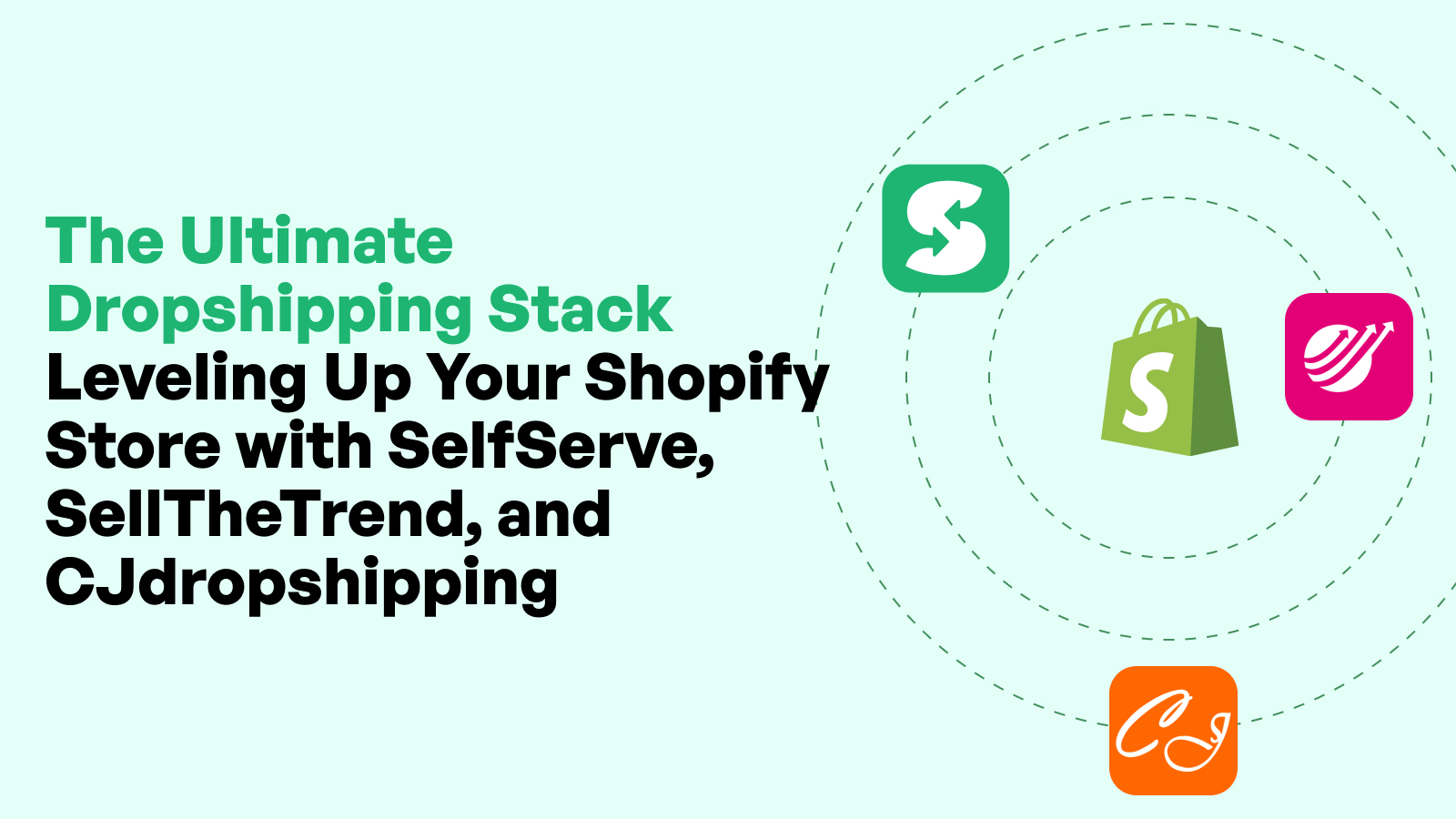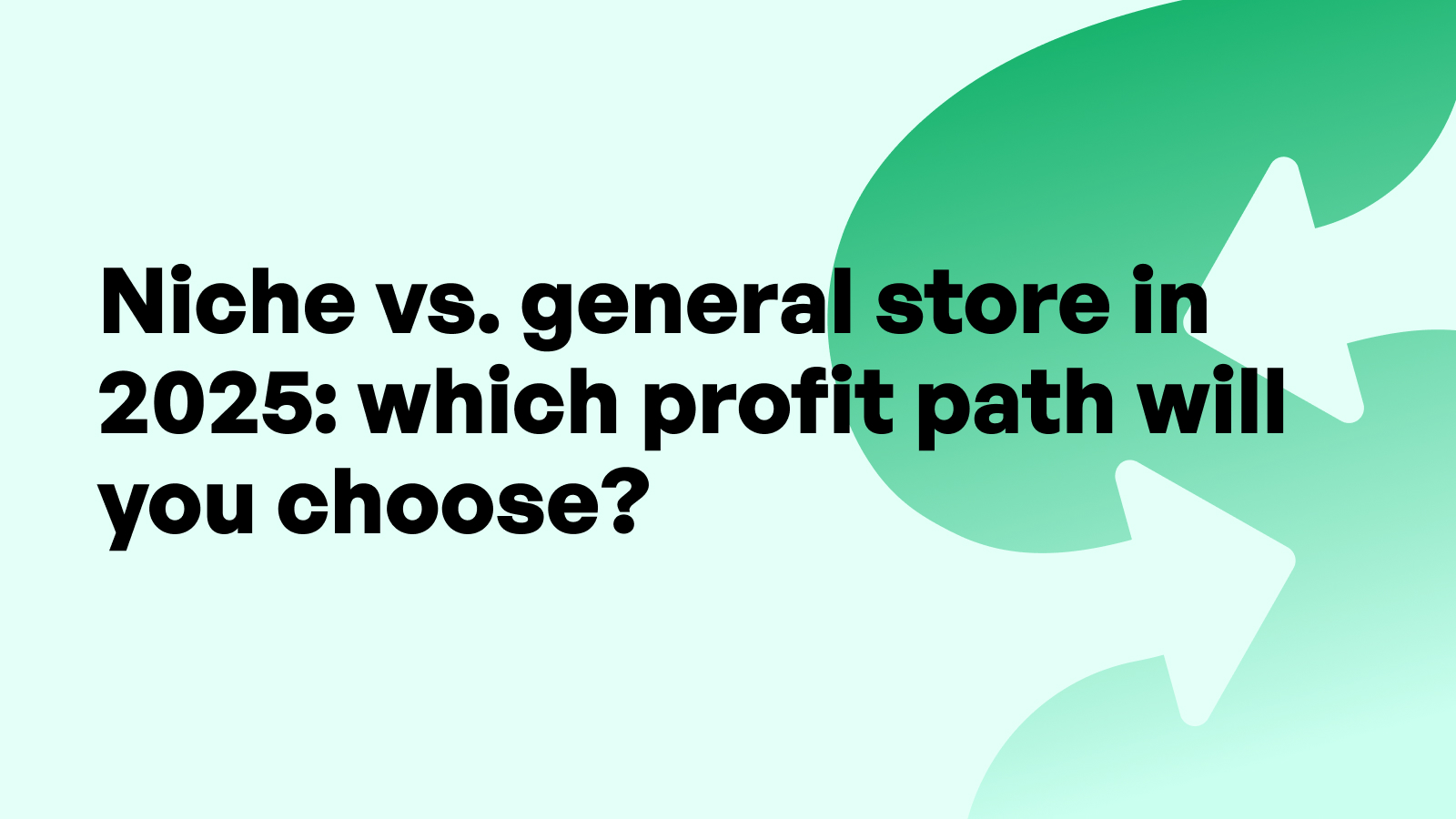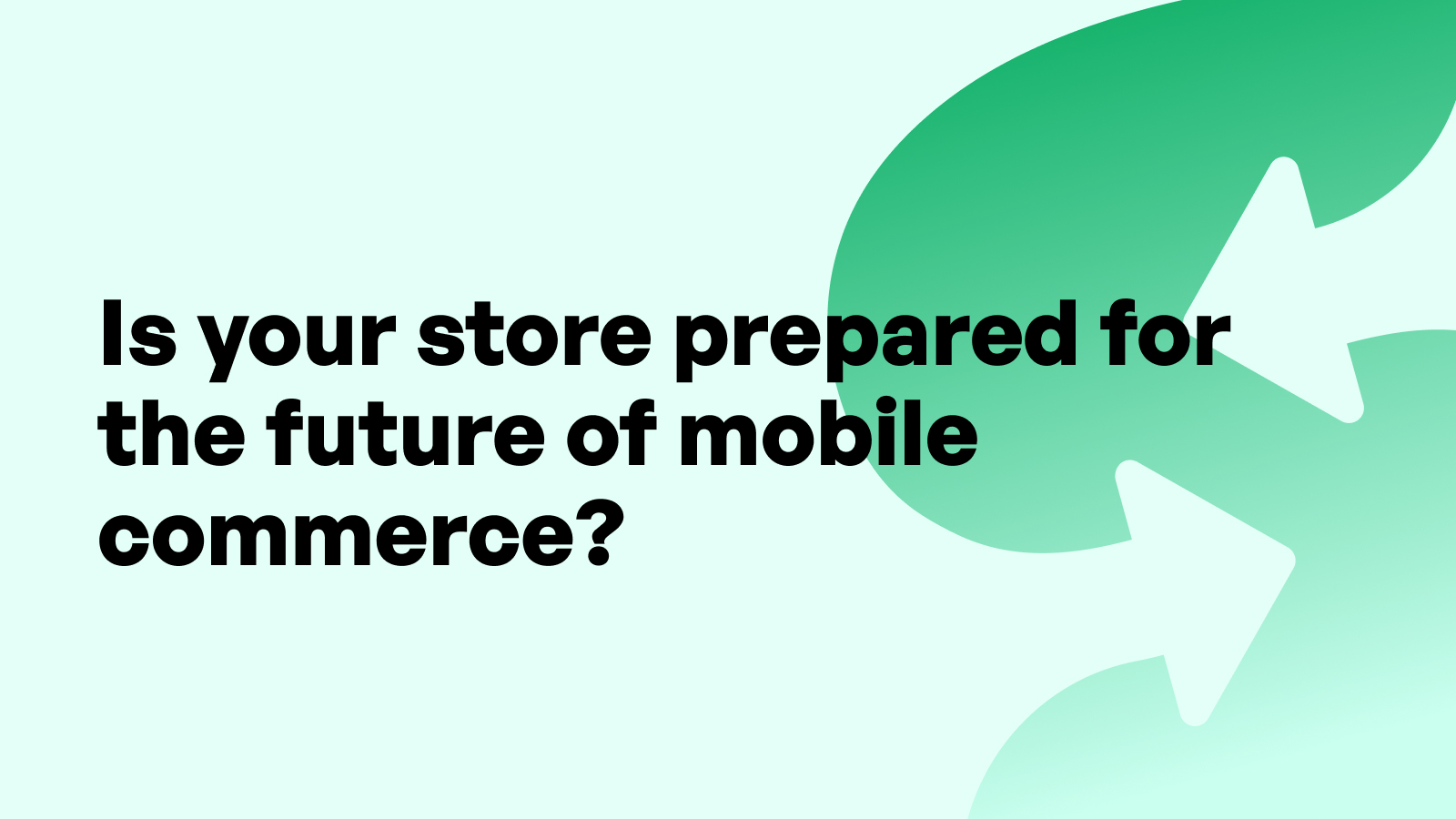Shopify eCommerce Trends to Watch in 2025

Why 2025 Will Be a Pivotal Year for Shopify Merchants
As the digital retail landscape evolves at an unprecedented pace, 2025 is shaping up to be a critical year for Shopify merchants aiming to future-proof their businesses. With the continued acceleration of global eCommerce, shifting consumer behavior, and groundbreaking technologies entering the mainstream, merchants who remain reactive will likely fall behind. Instead, proactive planning, agile adaptation, and tech-driven execution are the new benchmarks for success.
Shopify, as one of the world’s most scalable and merchant-centric eCommerce platforms, is uniquely positioned to lead this evolution. In 2025, we will see Shopify merchants transition from basic online storefronts to sophisticated, data-powered, and omnichannel experiences. Whether you're a small-scale boutique or a high-volume enterprise, the expectations of your customers are changing — and your strategy must evolve accordingly.
Evolving Consumer Expectations and Technological Advancements
Today’s consumers demand convenience, personalization, and transparency. By 2025, these expectations will become non-negotiables. Shoppers expect seamless experiences across mobile, desktop, social platforms, and even smart devices. They are increasingly motivated by brands that offer sustainability, inclusivity, and innovation. And they reward those who prioritize speed, accuracy, and security.
Simultaneously, technology is enabling Shopify merchants to deliver on these expectations. Artificial intelligence, voice assistants, augmented reality, and predictive analytics are no longer speculative — they’re mainstream tools available via Shopify apps and native integrations. What matters most in 2025 isn’t access to technology — it’s how well you use it to differentiate your brand and delight your customers.
Emerging Technology Trends Influencing Shopify Stores
AI-Powered Personalization and Predictive Merchandising
Artificial intelligence is not new to eCommerce, but 2025 will be the year it becomes indispensable. Shopify merchants will increasingly adopt AI not just for backend operations, but to shape real-time customer experiences.
Imagine a customer landing on your store’s homepage and being greeted with dynamically generated product recommendations based on their browsing behavior, purchase history, and even external data like social media engagement. This is predictive merchandising in action, and it significantly boosts conversion rates by making the buying experience feel tailored, relevant, and timely.
AI also enhances upselling and cross-selling opportunities. By analyzing purchasing patterns, AI tools can automatically suggest add-ons or upgrades at checkout or on product pages. Shopify apps like ReConvert and LimeSpot have already begun this transformation, but expect more native AI features to roll out in 2025 as Shopify leans deeper into automation.
Real-Time Product Recommendations and Smart Search
In 2025, Shopify merchants will need to move beyond basic search bars. Smart search systems powered by machine learning will analyze misspellings, synonyms, and user behavior to surface the most relevant results instantly. Autocomplete features will dynamically display trending products or collections, helping users discover faster.
These systems also tie into real-time recommendation engines, which personalize product suggestions based on session activity. For instance, if a customer spends time looking at summer shoes, the search engine might highlight seasonal accessories or related collections.
By offering a context-aware search experience, Shopify merchants can reduce friction, increase average order value, and deliver a more satisfying shopping journey.
AI Chatbots and Virtual Shopping Assistants
Customer support is evolving into real-time, 24/7 virtual assistance. AI-powered chatbots are no longer clunky or robotic. In 2025, they’ll be able to handle pre-sale inquiries, post-purchase updates, and product recommendations seamlessly — all while learning from every interaction.
Virtual shopping assistants will help guide customers through large catalogs, suggest items based on style or use-case preferences, and even provide restock updates. These bots will also reduce pressure on human support teams, saving costs and improving response times.
Apps like Tidio and Gorgias are already leading in this space, and their AI capabilities are expected to mature rapidly. Shopify merchants should evaluate how these tools fit into their broader customer experience strategy, especially during peak sales seasons.
Augmented Reality (AR) and 3D Product Visualization
Enhancing Product Experience and Reducing Returns
One of the biggest challenges for online retailers is bridging the gap between physical and digital experiences. Augmented reality provides that bridge. In 2025, Shopify merchants across industries — from fashion to furniture — will use AR to allow customers to try on products virtually or see how items look in their real-world spaces.
This immersive experience reduces uncertainty and builds confidence, leading to higher conversion rates and fewer returns. Customers can visualize how a couch fits in their living room or how a pair of glasses looks on their face without leaving home. That level of convenience creates competitive advantage.
For Shopify merchants, AR capabilities can be enabled through apps like Shopify’s own AR toolkit, which allows for 3D models and integration into product pages. Creating AR experiences does require investment in 3D rendering and testing, but the ROI through increased sales and customer satisfaction is well worth it.
Shopify AR Integration and Compatible Themes
Shopify continues to support AR through a range of themes and APIs that integrate 3D assets directly into storefronts. In 2025, more themes will come pre-built with AR support, allowing merchants to embed 3D models without extensive development.
Customers using mobile devices can launch AR views directly from the product page, while desktop users can rotate and zoom in on products in 3D. This visual interactivity increases engagement and gives Shopify merchants a powerful storytelling tool.
Moreover, AR content can be shared via social media, creating viral loops that extend your product reach. As AR adoption becomes more widespread, early adopters in the Shopify community will reap the brand loyalty and differentiation benefits.
Voice Commerce and Conversational Interfaces
Optimizing Shopify for Voice Search in 2025
Voice commerce is no longer a novelty — it’s becoming a staple for digital-first consumers. With smart speakers and voice assistants like Alexa, Siri, and Google Assistant becoming integrated into everyday routines, Shopify merchants must prepare for an increasingly voice-driven customer journey in 2025.
Optimizing for voice search requires a shift in how content and product descriptions are written. Instead of focusing only on short-tail keywords, merchants need to structure content using natural language queries. Phrases like “Where can I buy eco-friendly yoga mats near me?” or “What’s the best gift for a dog lover under $30?” will dominate voice-driven discovery.
Schema markup, FAQs, and concise meta descriptions are all tools Shopify merchants can use to increase their chances of being featured in voice search results. Shopify themes and apps that offer voice-enabled navigation or shopping flows will likely grow in popularity.
Smart Speaker Integrations and Accessibility Enhancements
In 2025, we expect tighter integration between Shopify stores and smart devices. Brands will enable features such as voice-powered cart additions, order tracking, and reordering through Alexa Skills or Google Actions.
This shift also has accessibility benefits. For visually impaired or differently abled users, voice navigation opens new doors to independent online shopping. Shopify merchants who embrace inclusive design and integrate these tools will expand their audience reach while demonstrating ethical brand values.
Apps that integrate with smart speakers or offer plug-and-play voice capabilities for Shopify will become more essential as customers expect hands-free, seamless interactions across all devices.
The Rise of Subscription and Membership Models
Growing Demand for Recurring Revenue Streams
The subscription economy continues to explode, and Shopify merchants are increasingly capitalizing on its stability and predictability. In 2025, subscriptions won’t just be about convenience — they’ll be about deepening the customer-brand relationship through personalized, value-added experiences.
From curated monthly boxes to auto-renewing wellness products, subscriptions allow merchants to lock in long-term customers. This model provides Shopify merchants with consistent revenue, reduced churn, and increased lifetime value per customer.
Merchants who invest in personalized subscription offerings — tailored based on customer preferences or buying cycles — will outperform generic offerings. Moreover, bundles and tiered pricing structures create options that appeal to different buyer personas.
Shopify Subscription Tools and Management Apps
Shopify has made strides in supporting subscriptions natively through its APIs, but third-party apps like Recharge, Skio, and Bold Subscriptions continue to offer the most flexible solutions. In 2025, these tools will include enhanced analytics, subscriber segmentation, churn prediction, and embedded loyalty features.
Shopify merchants should seek apps that integrate seamlessly with checkout, offer multiple billing cycles, and support customer self-service for subscription changes. This not only improves retention but also reduces support overhead.
Mobile-first subscription experiences, SMS management, and dynamic upsells are also features to watch as the subscription landscape matures.
Best Practices for Retention and Customer Lifetime Value
Customer acquisition costs are rising, so retention becomes critical. Shopify merchants must focus on delivering value beyond the initial transaction. Whether through exclusive member content, early product access, or surprise bonuses, retention tactics need to feel meaningful and brand-aligned.
Personalized communications — powered by AI — can remind customers when it’s time to renew, upsell based on behavior, or reward loyalty. Flexible pause and cancellation options are also essential to maintaining trust and minimizing involuntary churn.
The most successful Shopify subscription stores in 2025 will be those that see subscribers not as transactions, but as community members.
Checkout Innovations and Frictionless Payments
One-Click Checkout and Wallet Integrations
Speed and simplicity at checkout are no longer optional. With competition just a click away, Shopify merchants must streamline the final steps of the buying journey to maximize conversions. In 2025, one-click checkout technologies will be table stakes.
Apple Pay, Google Pay, PayPal One Touch, and Shopify’s own Shop Pay will continue to dominate. These wallets store payment, shipping, and contact information securely, allowing customers to complete purchases in seconds. This is particularly critical for mobile users, who make up a growing share of online traffic.
Shopify merchants should ensure their checkout is not only fast but also transparent. Clear pricing, intuitive design, and minimal form fields contribute to lower cart abandonment rates.
Biometric Payments and Device-Based Authentication
Biometric authentication — such as Face ID and fingerprint scans — will increasingly replace traditional login and payment flows. These technologies offer high security with low friction, appealing to today’s privacy-conscious consumers.
By 2025, Shopify merchants may even see native integration with biometric hardware through the Shopify ecosystem. The more seamless and secure the checkout, the higher the likelihood of completed sales, particularly on mobile.
Self Serve Shopify App as a Tool for Checkout Streamlining
One powerful way to enhance checkout efficiency and reduce customer support load is through automation — and this is where the Self Serve Shopify App proves invaluable. This tool allows customers to manage common order actions like returns, exchanges, and cancellations without contacting support.
By integrating self-service options into the post-purchase journey, Shopify merchants can dramatically improve customer satisfaction and reduce the time to resolution. It's particularly helpful during peak shopping seasons when support teams are overwhelmed.
When combined with optimized payment flows and predictive checkout logic, self-service tools make for a holistic, future-ready checkout experience.
Cross-Border Commerce and Localized Experiences
Multi-Currency, Language, and Region-Specific UX
The global appetite for online shopping continues to grow, and in 2025, Shopify merchants must be ready to meet international demand. Cross-border commerce is not only about expanding reach—it’s about crafting local experiences that convert.
Shopify Plus merchants can use international domains and multi-currency features to serve localized storefronts. This includes displaying product prices in local currency, adapting product availability based on regional demand, and translating pages into native languages. Localization also extends to trust signals such as reviews in a customer’s native language and regionally recognized payment methods.
Merchants should also pay attention to cultural nuances. What sells well in one region might require a different approach elsewhere. Custom marketing campaigns, adjusted tone of voice, and region-specific promotions can significantly boost conversion rates.
Duties, Taxes, and Local Fulfillment Integration
Frictionless cross-border shopping requires transparent handling of taxes, shipping, and import duties. Tools like Shopify Markets streamline many of these requirements, allowing merchants to calculate and collect duties at checkout, ensuring a smoother customer experience.
In 2025, more Shopify merchants will partner with third-party logistics providers (3PLs) that offer local fulfillment to reduce shipping costs and times. This is especially important as customers increasingly expect fast and affordable delivery—regardless of where the merchant is based.
Proactively displaying all-inclusive pricing at checkout, including shipping, taxes, and duties, helps avoid abandoned carts and improves trust in international transactions.
Compliance with International Data and Privacy Laws
Expanding globally means adapting to multiple privacy regulations. From the GDPR in Europe to CPRA in California and upcoming data laws in Asia-Pacific regions, Shopify merchants need to stay compliant.
Shopify’s evolving toolset allows merchants to implement cookie consent banners, data request portals, and age verification. Merchants must also update their privacy policies and ensure transparent data usage practices. In 2025, customer trust hinges on how clearly you communicate your data handling practices.
Social Commerce and Creator-Led Sales
TikTok, Instagram, and YouTube Shopping Trends
Social media is no longer just a discovery channel — it's a sales engine. In 2025, Shopify merchants must treat platforms like TikTok, Instagram, and YouTube as direct commerce ecosystems. The line between content and conversion continues to blur.
TikTok’s integration with Shopify allows creators to showcase products natively in their videos, linking directly to your product pages. Instagram Shops offer immersive product exploration via Stories, Reels, and Explore. YouTube Shopping enables creators to tag products mid-video or during live streams.
Merchants should align their content strategy with these formats — creating engaging short-form videos, user-generated content, and lifestyle integrations. Brands that master this balance of authenticity and commerce will dominate social feeds.
Shopify Collabs, Influencer Tools, and Affiliate Integrations
Shopify Collabs simplifies influencer outreach, letting merchants find and collaborate with creators based on niche, audience size, and engagement. In 2025, this tool will become even more important as micro- and nano-influencers drive niche community conversions.
Affiliates will also play a larger role in performance-based marketing. Shopify merchants can offer custom links, discount codes, and revenue-sharing options that motivate creators to become ongoing brand advocates.
With the right tools, merchants can measure ROI by channel, track influencer conversion rates, and iterate fast based on data.
Live Shopping and Real-Time Engagement Features
Live shopping is already massive in Asia and is quickly gaining ground in Western markets. In 2025, Shopify merchants will increasingly use live video to launch products, host Q&A sessions, and offer limited-time deals.
Shopify-integrated tools like CommentSold and Livescale allow for seamless live video hosting, with products shoppable in real time. Merchants should think like broadcasters — scheduling events, promoting them across social platforms, and offering exclusive perks to attendees.
The real-time element adds urgency and builds community, converting passive viewers into active buyers.
Green Commerce and Sustainable Business Models
Eco-Friendly Fulfillment and Carbon-Neutral Shipping
Sustainability is more than a trend—it’s a business imperative in 2025. Customers are increasingly making purchasing decisions based on environmental impact, and Shopify merchants need to respond with visible, verifiable actions.
Eco-friendly packaging, paperless receipts, and carbon-neutral shipping are becoming baseline expectations. Shopify’s Planet app allows merchants to offset their delivery emissions automatically. Merchants can also partner with fulfillment centers that prioritize sustainable operations and optimize last-mile logistics.
Communicating these efforts transparently—on product pages, shipping policy pages, and checkout—boosts trust and strengthens brand loyalty.
Transparent Product Sourcing and Ethical Branding
Shopify merchants who lead with ethical sourcing and transparent supply chains will build deeper connections with socially conscious consumers. In 2025, expect to see more stores offering visibility into where, how, and by whom products are made.
Badges like “Fair Trade Certified,” “Cruelty-Free,” or “Made Locally” help customers make informed decisions. Blogs, behind-the-scenes videos, and supplier spotlights also contribute to an authentic sustainability narrative.
Being transparent about the real impact of sustainability efforts—rather than greenwashing—will be key to building long-term trust.
Shopify Apps Supporting Sustainability Goals
Several Shopify apps now help merchants track, manage, and promote their sustainability commitments. Apps like EcoCart, CarbonClick, and Planet automate carbon offsetting, while others enable donation-based campaigns or highlight eco-friendly products in-store.
In 2025, expect tighter integration between these apps and store analytics, allowing merchants to measure the business impact of their sustainability initiatives. This data can also be repurposed into marketing material to show how your brand is part of the climate solution.
Advanced Analytics and AI-Driven Insights
Predictive Analytics for Inventory and Demand Planning
As Shopify merchants face tighter margins and more intense competition, analytics becomes a core driver of operational efficiency. In 2025, predictive analytics will empower merchants to forecast demand accurately, plan inventory, and reduce stockouts or overstock situations.
These insights will be powered by historical sales data, browsing behavior, seasonality patterns, and even macroeconomic trends. Advanced tools within Shopify Plus or third-party platforms like Glew and Triple Whale will enable merchants to take preemptive actions like placing supplier orders early or running targeted pre-order campaigns.
Reducing waste, optimizing warehouse space, and aligning marketing with predicted demand cycles not only saves money but also enhances customer satisfaction by ensuring product availability.
Smart Dashboards and Custom KPIs in Shopify
Generic reports are no longer enough. In 2025, Shopify merchants will need dashboards tailored to their unique business model. This means defining and tracking custom KPIs, from average order value by traffic source to return rates segmented by product type.
Shopify’s built-in analytics tools are improving, especially for Shopify Plus users. Coupled with integration options for Google Analytics 4, Metorik, or Looker Studio, merchants can create unified reporting dashboards with real-time insights.
These dashboards allow for smarter daily decision-making, more agile marketing adjustments, and better investor or team communication.
Using Analytics for Personalization and Segmentation
Personalization is only as good as the data behind it. In 2025, successful Shopify merchants will use customer analytics to deliver tailored email flows, segmented discounts, and personalized on-site experiences.
Segmenting customers based on behavior — such as frequency, recency, or product category affinity — allows merchants to serve content and offers that feel highly relevant. AI will help automate these experiences at scale, ensuring each customer interaction feels unique.
Retention, conversion, and lifetime value all improve when personalization is backed by strong analytics.
Enhanced Storefront Customization and Headless Commerce
Shopify Hydrogen and Headless CMS Integration
Headless commerce is becoming mainstream. By 2025, Shopify merchants seeking ultra-fast, scalable, and deeply customized storefronts are turning to Hydrogen, Shopify’s React-based framework, paired with headless CMS platforms like Contentful or Sanity.
Headless architecture decouples the frontend and backend, giving developers complete control over UX while retaining Shopify’s backend commerce functionality. This is ideal for brands that want to push design boundaries, localize content dynamically, or handle large-scale promotional campaigns without compromising speed.
Hydrogen's adoption is growing rapidly as it simplifies the setup of performant, app-like storefronts. It’s especially valuable for enterprise-level Shopify merchants.
Increased Demand for Developer-Led Experiences
As headless commerce gains ground, the role of developers becomes more central. Shopify merchants are investing in in-house or agency-led dev teams that build and maintain custom frontends while connecting to Shopify’s backend via APIs.
This shift means merchants must invest not only in technology but in talent — either internally or through trusted partners. In return, they gain agility, better performance, and more creative flexibility.
Developer-led experiences can be tailored to specific audiences, such as B2B buyers needing quote-based pricing or fashion shoppers expecting high-end visuals.
Benefits and Risks of Going Headless in 2025
While the benefits of headless commerce include faster loading times, deeper customization, and future-proof tech stacks, the risks shouldn’t be ignored. These include increased development costs, longer launch timelines, and complex maintenance workflows.
Shopify merchants should assess whether their brand goals, team structure, and scalability needs justify the move. For many, a hybrid approach — where only parts of the storefront are headless — might offer the best of both worlds.
Privacy, Security, and Data Ethics
Rising Importance of First-Party Data Collection
With the decline of third-party cookies and growing scrutiny around data privacy, Shopify merchants in 2025 must shift toward first-party data strategies. This includes collecting data directly from customers through email signups, quizzes, reviews, and post-purchase surveys.
First-party data is more reliable and can be used to power personalized experiences without violating privacy expectations. It also gives merchants more control over their audience relationships, reducing reliance on paid ads.
Consent-based marketing and transparent opt-in mechanisms are critical here. Merchants should clearly explain how data is used and offer real value in return.
Shopify’s Evolving Compliance Tools and Frameworks
Shopify is continually enhancing its built-in compliance tools to help merchants adhere to laws like GDPR, CPRA, and new regional privacy regulations. Features include cookie management, data deletion requests, consent logs, and IP-based privacy controls.
In 2025, we expect even more automated compliance workflows — from consent banners to jurisdiction-specific data handling. Shopify merchants should stay proactive by regularly reviewing their policies and ensuring all apps in their stack are also compliant.
Failing to meet evolving regulations can result in fines, reputational damage, and customer mistrust.
Building Trust Through Transparent Data Use
Trust is a currency in eCommerce. Shopify merchants who are upfront about what data they collect and how it’s used will stand out.
Clear privacy policies, cookie consent banners, and optional personalization settings demonstrate respect for customer autonomy. Merchants can also educate users on how data enhances their shopping experience — like showing them products they’re more likely to love or sending more relevant updates.
Transparency leads to stronger relationships, better engagement, and long-term brand loyalty.
B2B eCommerce Expansion on Shopify
New Features in Shopify Plus for B2B Merchants
B2B commerce is evolving quickly, and Shopify is rising to meet this demand. In 2025, B2B Shopify merchants can leverage features like company accounts, shared payment methods, custom catalogs, and volume pricing directly through Shopify Plus.
This allows manufacturers, wholesalers, and distributors to build tailored portals without third-party platforms. Buyers can create multiple users per account, set permissions, and place orders in bulk.
These enhancements open new doors for DTC brands expanding into B2B or existing B2B merchants upgrading from outdated systems.
Account-Based Pricing, Net Terms, and Bulk Discounts
Sophisticated B2B workflows require flexible pricing. Shopify Plus allows for account-specific pricing rules, net terms (like 30-day invoicing), and minimum order thresholds. Merchants can set custom discounts or tax rules per business account.
This level of control improves buyer satisfaction, especially for procurement teams and repeat purchasers. It also allows Shopify merchants to build long-term B2B relationships based on trust and convenience.
Expect more apps and features in 2025 to automate quote management, reorder flows, and negotiation-based pricing.
B2B-Specific Checkout Flows and Approval Chains
B2B buyers often require more than a simple credit card checkout. They need PO numbers, approval flows, and support for large teams. Shopify’s B2B suite supports these workflows with advanced checkout customization.
Merchants can enable tiered approval chains, PDF invoices, and detailed order summaries tailored to enterprise buyers. Integrations with ERP or accounting tools like NetSuite and QuickBooks further streamline operations.
Mobile-First UX and Progressive Web Apps
The Shift Toward PWA and Instant Loading Experiences
As mobile traffic dominates eCommerce, the expectation in 2025 is for Shopify merchants to deliver lightning-fast, app-like experiences without requiring an actual app download. This is where Progressive Web Apps (PWAs) come in.
PWAs offer near-instant loading speeds, offline browsing, push notifications, and homescreen shortcuts. Shopify merchants using tools like Tapcart or custom headless setups can deploy PWAs to drastically improve mobile UX and retention rates.
Fast-loading pages not only boost engagement but also enhance SEO. In 2025, Google’s Core Web Vitals continue to prioritize mobile speed and interactivity, making PWAs not just an enhancement — but a strategic necessity.
Tap-to-Pay, Digital Wallets, and Streamlined Mobile Checkout
Mobile checkout must feel intuitive and frictionless. Shopify merchants benefit from built-in compatibility with Apple Pay, Google Pay, and Shop Pay, all of which offer tap-to-pay experiences with minimal input.
These features reduce cart abandonment, especially among Gen Z and Millennial shoppers who prefer instant, secure mobile transactions. QR code integration and mobile-only discount codes are also becoming part of the mobile marketing playbook.
As attention spans shrink, optimizing every micro-moment in the mobile funnel will define successful Shopify stores in 2025.
Loyalty, Gamification, and Community Building
Shopify Loyalty Apps and Points-Based Engagement
Customer loyalty is harder to earn — and more valuable — than ever before. Shopify merchants are increasingly turning to loyalty apps like Smile.io, Yotpo, and Rise.ai to create structured rewards programs.
In 2025, point-based systems are evolving to include tiers, surprise-and-delight mechanics, and experiential rewards. Merchants are using loyalty programs not only to drive repeat purchases but also to gather zero-party data that informs future personalization.
Clear dashboards, goal tracking, and mobile integration are essential for success.
Gamified Shopping Experiences and Interactive UX
Beyond points and discounts, gamification adds a fun, engaging layer to the shopping experience. From spin-to-win popups to quiz-based product finders, Shopify merchants are experimenting with interactive elements that drive time-on-site and conversions.
Live challenges, social sharing incentives, and personalized achievements are helping brands deepen emotional engagement with customers. In 2025, we expect to see more Shopify-native gamification tools emerge.
Community Portals, Member Forums, and VIP Access
Community is becoming a competitive moat. Shopify merchants are investing in platforms like Circle, Discord, or even Shopify-integrated forums to create spaces where customers connect with the brand and each other.
VIP groups, early access to drops, and brand ambassador programs build loyalty beyond transactions. These communities also act as informal support channels, content creators, and referral engines.
Brands that cultivate community will enjoy lower churn and higher brand advocacy in 2025.
Future-Proofing Your Shopify Store for 2025 and Beyond
Agile Tech Stack Planning and Integration Management
With Shopify’s ecosystem growing rapidly, merchants must make smart decisions about their tech stack. Choosing flexible, well-supported apps and integrations ensures your store can evolve as trends shift.
Avoiding lock-in, vetting app reviews, and ensuring interoperability across tools are key strategies. Merchants should also regularly audit app performance and update legacy tools.
In 2025, composability — the ability to assemble and reassemble tech components on demand — becomes a defining capability for scalable Shopify stores.
Staying Ahead of Trends Through Education and Community
Shopify merchants who stay plugged into industry updates, partner events, and educational content will adapt faster. Following Shopify’s changelog, joining merchant communities, and engaging with experts through newsletters and podcasts help store owners stay sharp.
Merchants can also beta test new features, join pilot programs, and provide feedback to app developers — becoming co-creators in the ecosystem’s evolution.
In a fast-moving environment, curiosity and adaptability are the ultimate competitive advantages.
Conclusion: Ready for the Future of Shopify eCommerce
2025 brings both complexity and opportunity. For Shopify merchants, success will depend on readiness — adopting tools that reduce friction, personalizing experiences at scale, and aligning brand values with customer expectations.
From social commerce to PWAs, data privacy to sustainability, the future belongs to agile, customer-first businesses that use Shopify as their growth engine.
As part of building a frictionless and scalable experience, merchants should also consider automation tools like the Self Serve Shopify App. By empowering customers to manage their orders — including returns, exchanges, and cancellations — this app reduces support workload and enhances the post-purchase experience. It’s a simple yet powerful way to boost satisfaction and retention in a landscape where every interaction matters.
Frequently Asked Questions (FAQs)
1. What are the top Shopify eCommerce trends to watch in 2025?
The top trends include AI-powered personalization, headless commerce, voice-enabled shopping, social commerce integrations, cross-border localization, and sustainability-focused operations. Shopify merchants embracing these innovations will lead in customer experience and revenue growth.
2. How can Shopify merchants prepare for international selling in 2025?
Merchants should use Shopify Markets, support multi-currency and language localization, handle taxes and duties transparently, and integrate local fulfillment partners. Compliance with international privacy laws is also crucial to long-term success.
3. Why is headless commerce gaining popularity among Shopify merchants?
Headless commerce allows complete control over the storefront user experience while leveraging Shopify’s backend. It enables faster loading times, deeper customization, and greater scalability, especially for high-volume or brand-led merchants.
4. What are the best tools for Shopify merchants to improve analytics and personalization?
Shopify Plus analytics, Google Analytics 4, Triple Whale, and custom dashboards through Looker Studio are key. For personalization, merchants can use tools like Klaviyo, Postscript, and Rebuy to trigger behavior-driven experiences and product recommendations.
5. How can Shopify merchants reduce support tickets and improve post-purchase experience?
By implementing tools like the Self Serve Shopify App, merchants allow customers to handle returns, exchanges, and order changes without contacting support. This not only reduces operational costs but also improves customer trust and loyalty.




